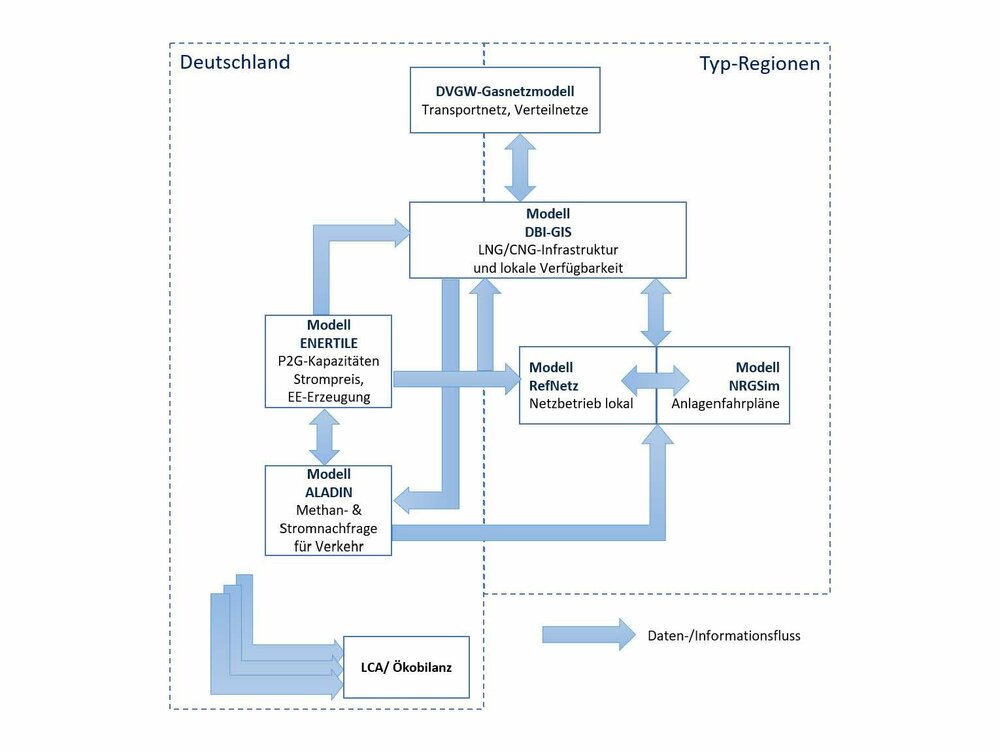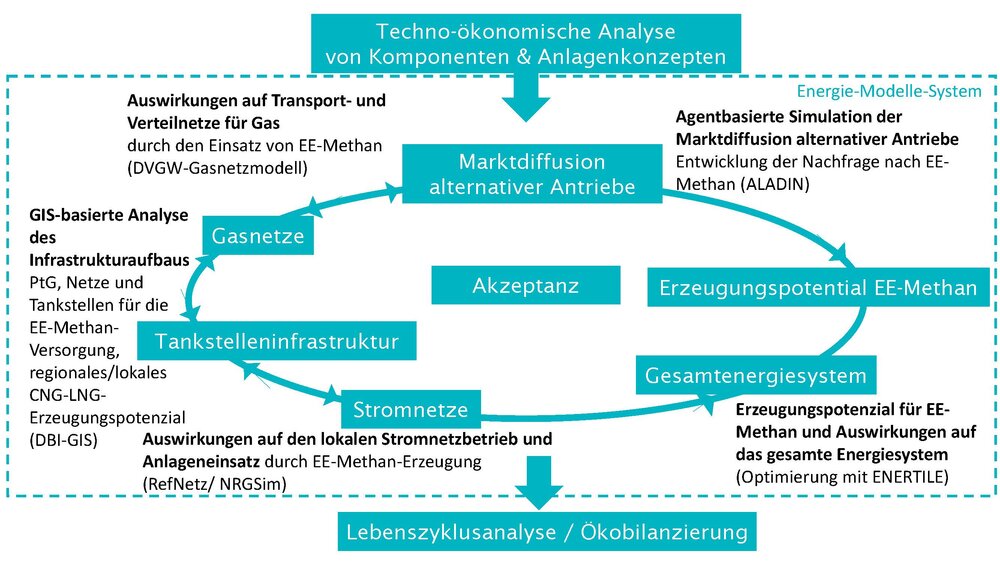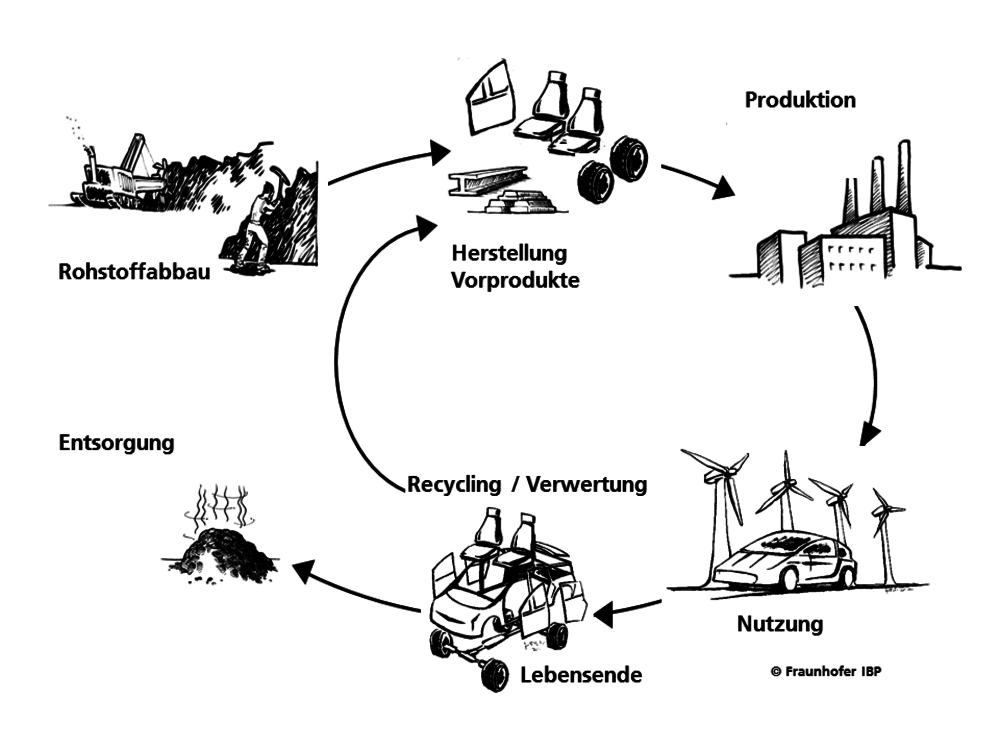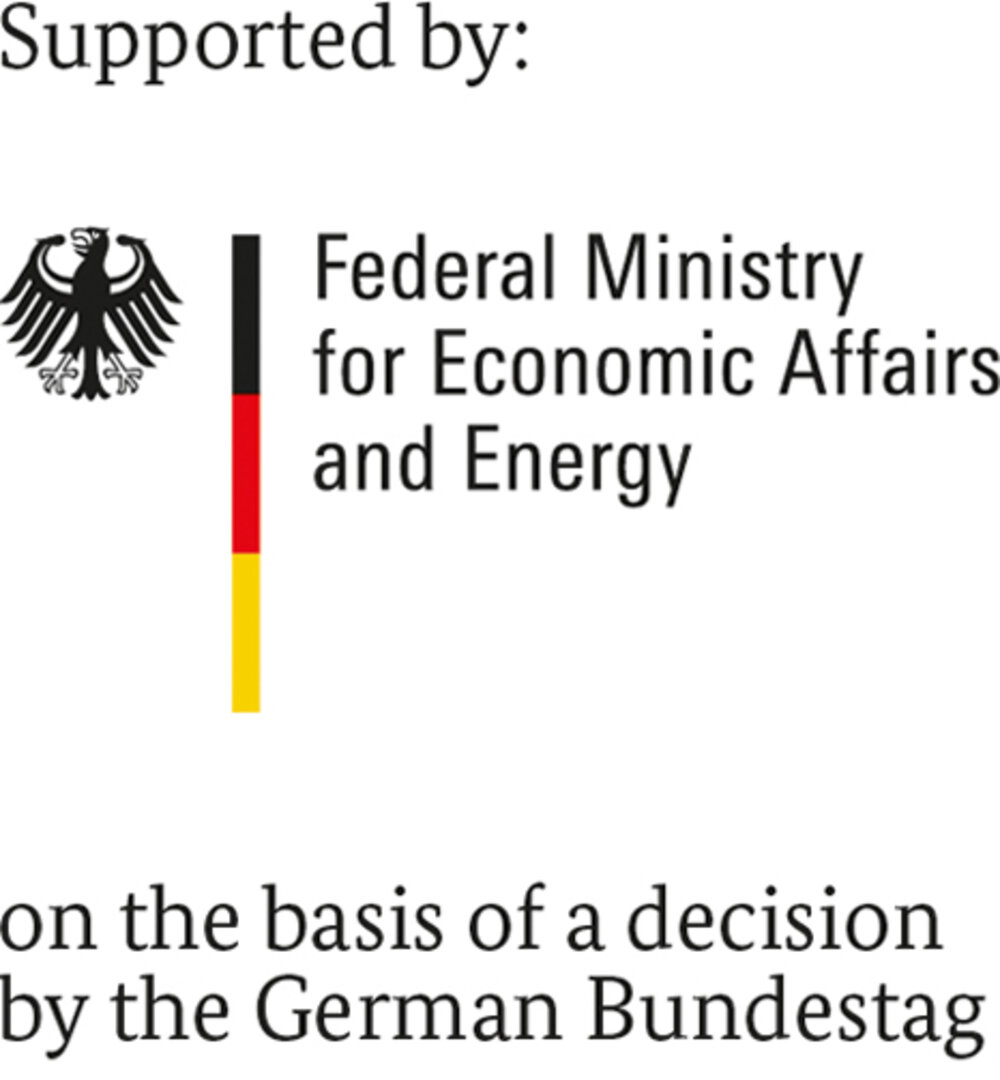MethSys: Determining the effects of renewable methane in the transport and power sectors.
Infrastructure requirements and logistics for RE-methane in Germany
Knowledge of infrastructure and logistics needs is vital for the introduction of RE-methane. For this reason MethSys is developing a whole-area simulation for Germany covering the supply of RE-methane and the entire logistics chain from generation, transport and storage through to end-users. The group is likewise creating a comprehensive concept illustrating how the operation of PtG plants can best be controlled across the entire energy system to ensure optimum grid function.
Comprehensive system analysis using the Energy Model System (EMS)
Within the framework of the system analysis, the various existing models of the partners are linked with each other and result in a comprehensive energy model system (Figure 2). This system runs through iteratively and starts with the model ALADIN, which simulates the demand in the transport sector. In the next step, Enertile determines the optimal generation capacities, which are passed on to the model DBI-GIS. This model analyses the regionally resolved supply of the transport sector and models the required filling station infrastructure. Based on this data, the effects on the electricity and gas networks can then be simulated using the models RefNetz, NRGSim and the DVGW gas network model.
Market and social acceptance of EE-Methane
The group likewise analyzes market and social acceptance for RE-methane in relation to applications and infrastructure for shipping and road-based freight transport. The project’s work represents one of the very first attempts ever to systematically assess acceptance for RE-methane using current socio-scientific methods and theories.
The MethSys group looks at the big picture: The partners in this group take a macroeconomic approach to identifying the effects that the large-scale introduction of alternative fuels would have. The work also uses results from other groups so that MethSys has something of a consolidating function within the main project. The decisive aspect of work in MethSys is that it aims to further develop and link models that until now remained separate and dealt only with partial sections of the energy system such as electricity and gas grids. Compared with the situation previously, the participants are now able to construct a far more comprehensive system of models that is capable of dealing with the possible development of RE-methane in the energy system on a comprehensive and cost-based quantitative basis. In addition to the use of RE-methane in the transport sector, the group’s activities extend to the supply of other areas of application in industry, domestic residences and heating grids in order to identify interacting factors and relationships.
Among other issues, the work includes market ramp-up simulations for alternative fuels and an assessment of generation potential for RE-methane. To this end, the participants are also conducting an analysis of regional expansion requirements for electricity and gas networks in order to facilitate realistic estimation of the overall economic costs of introducing RE-methane. A further central project aim also involves fine-meshed regional infrastructure modeling using GIS models retro-linked with high-precision, short-interval modeling for the overall energy system supplemented by detailed gas distribution and transportation networks.
The interdisciplinary nature of work in MethQuest, tight networking between the six groups and the large number of partners from industry and research institutions involved in technological development models can be developed on the basis of a unique fund of data that allows comprehensive analysis of the system and its functional modalities.
System analysis: Energy industry
In their system analysis for the energy industry, the participants seek to simulate market penetration for RE-methane and to determine total demand in the transport sector. In addition, they analyze the development potential for RE-methane consistent with expansion of generation capacity. This likewise generates options for sector coupling. From their analysis, the partners can identify detailed factors crucial for the generation of synthetic fuels. These include PtG potential, competition from other flexibility options and synergies from the utilization of shared infrastructure.
RE-methane: Eco-balance
Achieving climate-change targets is not an issue for isolated statistics such as the efficiency of a PtG plant. The decisive factor here is eco-balance in respect of the entire energy system including the whole value creation chain for RE-methane. This is why MethSys is analyzing the eco-balance (life-cycle analysis) both for RE-methane generation (MethFuel) and for the various applications, i.e. for engines in road transport vehicles (MethCar), for CHP plants (MethPower) and for marine engines (MethMare). Those involved are also assessing the CO2 saving potential offered by RE-methane as compared with fossil-based natural gas.
Supplementary research
In addition to work in MethQuest itself, MethSys group members are closely involved with accompanying research as outlined in the funding statement ‘Energy Revolution in Transport’ as well as with other projects operating within the framework of the funding initiative.



